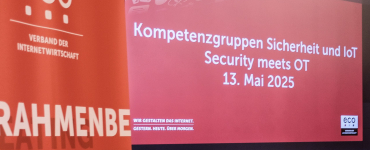To ensure that projects leveraging the potential of the Industrial Internet of Things (IIoT) are truly successful, companies require a holistic approach. Technical, organisational, and economic aspects must be carefully assessed both before and during the project. From setting clear objectives and seamlessly integrating hardware and software to establishing supportive partnerships and implementing solid cost management – companies that take a strategic approach are best positioned to seize the opportunities of IIoT and secure long-term competitiveness.
1. Define clear objectives and use cases
One of the major challenges in IIoT projects is the definition of a clear use case. The focus should be on the added value the project delivers to the company and its customers. Guiding questions include:
- What problems should the use of IIoT solve?
- Which processes should be optimised?
- How can the success of the project be measured continuously?
A well-defined use case helps clearly outline the scope and timeline of the project and aligns all stakeholders towards a shared objective.
2. Integration of hardware and software
The success of IIoT projects often depends on the seamless integration of hardware and software components. When selecting suitable hardware – such as sensors, gateways, or controllers – companies should consider:
- Compatibility: Can the hardware communicate smoothly with existing systems? What adjustments are required?
- Reliability: Is the hardware robust enough to operate reliably under variable conditions – from production halls to outdoor construction sites? For use in critical production environments, rigorous testing and validation are essential.
- Low latency: The software must process hardware data effectively and deliver insights in near real time. The combination of edge and cloud infrastructure supports secure, low-latency transmission.
- Scalability: How flexibly can the IoT solution adapt to changes in business planning? Can the hardware be extended as needed?
3. Data security strategy
As industrial systems become more interconnected, the risk of cyberattacks increases. Many IoT devices collect and transmit sensitive information such as location or health data, which attackers may exploit for social engineering or manipulation. Preventing unauthorised access to devices or networks is critical. A comprehensive data security strategy should be prioritised from the outset and fully integrated into the project. Key components include:
- Encryption: Protecting data during transmission and storage.
- Authentication: Ensuring only authorised users and devices can access the network.
- Regular updates: Applying security patches to address known vulnerabilities.
4. Organised, interdisciplinary teamwork
IIoT projects require expertise across multiple disciplines, including mechanical engineering, electrical engineering, IT, and data analysis. A strong interdisciplinary team is vital to overcome integration challenges and drive innovation.
This includes establishing clear communication structures and effective project management to ensure optimal collaboration and knowledge sharing.
5. Continuous project evaluation
Iterative development processes enable flexible responses to changing requirements. IIoT projects – particularly those with significant hardware elements – benefit from agile methods.
Starting with a pilot project allows for small-scale testing and the gathering of insights for wider implementation. This early risk mitigation helps identify and resolve potential issues before scaling.
6. Cost management and profitability
Given the substantial investment required for IIoT hardware, a robust cost-benefit analysis is essential. Companies must evaluate both initial and ongoing costs – such as maintenance and operation – against expected savings and returns.
7. Collaboration: partnerships and ecosystems
Collaborating with experienced partners and integrating into an IIoT ecosystem can significantly enhance project success. Hardware manufacturers, software providers, and system integrators bring specialised expertise that is invaluable in complex implementations. Open standards and platforms support interoperability, offering greater flexibility and scalability for all stakeholders involved.
Are you interested in further Industrial IoT topics? As a member of the eco Internet of Things Competence Group, you can help shape and engage with the industry. Contact us here!




